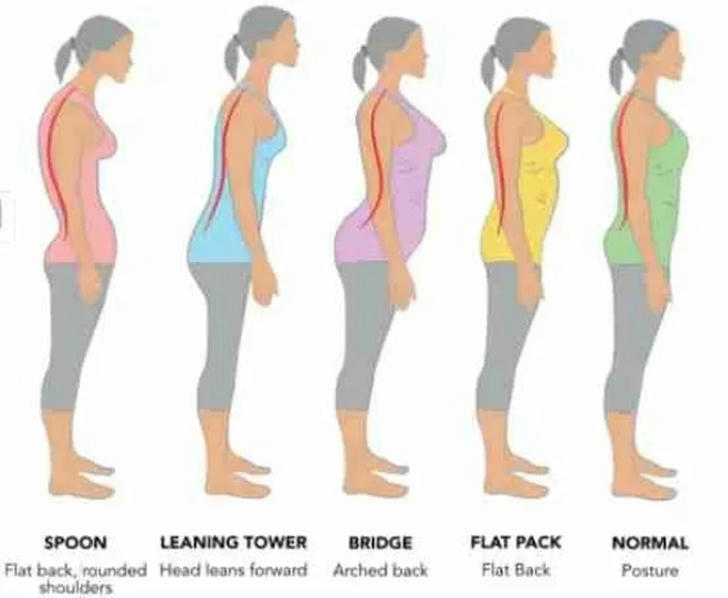The Role of Posture in Sciatica: How to Sit, Stand, and Sleep Better
Sciatica, characterized by pain radiating along the sciatic nerve—which runs from the lower back down through the hips and legs—can be a debilitating condition. While it’s often caused by underlying issues like a herniated disc or spinal stenosis, one frequently overlooked factor is posture. Poor posture can exacerbate sciatica symptoms or even contribute to their development. The good news? By making simple adjustments to how you sit, stand, and sleep, you can alleviate pain and prevent further irritation of the sciatic nerve. In this article, we’ll explore the connection between posture and sciatica and provide practical tips to help you sit, stand, and sleep better.
What is Sciatica?

Sciatica refers to pain that originates in the lower back or buttocks and travels down one or both legs, following the path of the sciatic nerve. This pain can range from mild discomfort to severe, sharp, or burning sensations. Other symptoms may include numbness, tingling, or weakness in the affected leg.
Common causes of sciatica include:
Herniated or bulging discs
Spinal stenosis (narrowing of the spinal canal)
Piriformis syndrome (tightness or spasms in the piriformis muscle)
Degenerative disc disease
Poor posture
While medical treatments like physical therapy, medications, or even surgery may be necessary in some cases, improving your posture can play a significant role in managing and preventing sciatica.
How Posture Affects Sciatica

Your posture directly impacts the alignment of your spine and the pressure placed on your nerves, including the sciatic nerve. Poor posture can:
Increase Pressure on the Spine: Slouching or hunching can compress the discs in your lower back, leading to herniation or irritation of the sciatic nerve.
Tighten Muscles: Poor posture often leads to tightness in the lower back, hips, and glutes, which can aggravate the sciatic nerve.
Misalign the Pelvis: An uneven pelvis can strain the lower back and irritate the sciatic nerve.
Reduce Blood Flow: Slouching can restrict blood flow to the lower back and legs, worsening inflammation and pain.
By correcting your posture, you can reduce these risks and create a more supportive environment for your spine and nerves.
How to Sit Better: Posture Tips for Sciatica Relief
Many of us spend hours sitting at desks, in cars, or on couches, often with poor posture. Here’s how to sit in a way that supports your spine and reduces sciatica pain:
Choose the Right Chair: Use a chair with good lumbar support or place a small pillow or rolled-up towel behind your lower back to maintain its natural curve.
Keep Your Feet Flat: Place your feet flat on the floor, with your knees bent at a 90-degree angle. Avoid crossing your legs, as this can misalign your pelvis.
Sit Up Straight: Align your ears, shoulders, and hips in a straight line. Avoid slouching or leaning forward.
Take Breaks: Sit for no more than 30 minutes at a time. Stand up, stretch, and walk around to relieve pressure on your spine.
Use a Footrest: If your feet don’t reach the floor, use a footrest to maintain proper alignment.
How to Stand Better: Posture Tips for Sciatica Relief
Standing for long periods can also strain your lower back and sciatic nerve. Follow these tips to improve your standing posture:
Distribute Your Weight Evenly: Stand with your weight evenly distributed between both feet. Avoid leaning to one side.
Engage Your Core: Tighten your abdominal muscles to support your lower back.
Keep Your Shoulders Back: Roll your shoulders back and down to avoid hunching.
Use a Stool: If you stand for long periods, alternate resting one foot on a low stool to reduce pressure on your lower back.
How to Sleep Better: Posture Tips for Sciatica Relief
Sleeping in the wrong position can worsen sciatica pain, while the right position can help alleviate it. Here’s how to sleep better:
Sleep on Your Side: This is often the best position for sciatica sufferers. Place a pillow between your knees to keep your hips aligned and reduce pressure on your lower back.
Use a Supportive Mattress: A medium-firm mattress provides the right balance of support and comfort for your spine.
Elevate Your Knees: If you sleep on your back, place a pillow under your knees to maintain the natural curve of your lower back.
Try a Body Pillow: A full-length body pillow can help maintain proper alignment and reduce pressure on your sciatic nerve.
Additional Tips for Managing Sciatica Through Posture
Practice Good Posture Daily: Be mindful of your posture throughout the day, whether you’re sitting, standing, or walking.
Stretch Regularly: Gentle stretches for the lower back, hips, and hamstrings can relieve tension and improve posture.
Strengthen Your Core: A strong core supports your spine and reduces the risk of sciatica. Incorporate exercises like planks, bridges, and pelvic tilts into your routine.
Use Ergonomic Tools: Consider using ergonomic chairs, standing desks, or lumbar support cushions to maintain proper posture.
Stay Active: Regular physical activity, such as walking, swimming, or yoga, can improve posture and reduce sciatica symptoms.
When to Seek Professional Help
While improving your posture can help manage sciatica, it’s important to consult a healthcare professional if:
Your pain is severe or worsening
You experience numbness or weakness in your legs
You have difficulty controlling your bladder or bowels (a sign of cauda equina syndrome, a medical emergency)
A doctor, physical therapist, or chiropractor can provide personalized advice and treatment options tailored to your needs.
Conclusion
Sciatica can be a painful and frustrating condition, but the power of good posture shouldn’t be underestimated. By making simple adjustments to how you sit, stand, and sleep, you can reduce pressure on your sciatic nerve, alleviate pain, and prevent future flare-ups. Remember, posture isn’t just about looking confident—it’s about supporting your spine and overall health.
So, the next time you catch yourself slouching, take a moment to straighten up. Your sciatic nerve will thank you!
